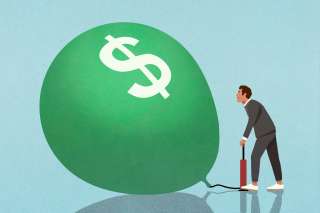When Will the Fed Cut Rates? Cooling Inflation Builds Hope for September

Optimism about the prospects for interest rate cuts increased on Wednesday after new government data showed that inflation is cooling.
The year-over-year inflation rate eased to 3.4% in April after rising 0.3% from the previous month, which was less than expected.
The good news on inflation in the April consumer price index (CPI) report was a welcome development for investors and people hoping for lower mortgage rates. Previously, inflation ticked up to an annual rate of 3.5% in March, which prompted Federal Reserve Chair Jerome Powell to remark about “a lack of further progress” on inflation.
The Federal Reserve committee that sets interest rates meets three times this summer — in June, July and September — and a growing number of analysts are now eyeing that September meeting for the Fed’s first interest rate cut. The Fed is waiting for inflation to show consistent signs of decreasing before it lowers rates.
“Following three months of inflation upsets, the April report put a soft landing and 2024 rate cut back in investors’ sights," Julia Pollak, chief economist at ZipRecruiter, said in a note. “Restrictive interest rates are putting a slow squeeze on the economy and having the intended effect of cooling inflation."
Bret Kenwell, U.S. investment analyst at eToro, said the “the not-too-hot report should boost investor confidence that we could see more than one rate cut from the Fed this year, which should be a positive for equities.”
Interest rate cuts are on the table as inflation eases
Core CPI inflation, which excludes volatile food and energy prices, fell to 3.6% year-over-year, which is the lowest level since 2021. Bill Adams, chief economist for Comerica Bank, said this gives the bank reason to think that two rate cuts are coming, in September and December.
“The Fed would probably cut rates at their next decision if they weren’t coming out of the biggest surge in inflation in over 40 years,” Adams says. “But after missing their inflation target badly during the post-pandemic recovery, they are anxious to do better on that half of their dual mandate, even at the cost of risking a weaker economy and job market.”
Gargi Chaudhuri, chief investment and portfolio strategist at BlackRock Americas, said in a note that she also expects two rate cuts in 2024, with the first in September. A rate cut any earlier than that is unlikely because annual shelter inflation is still too high at 5.5%, she said.
The Bureau of Labor Statistics said in a release that the increases in shelter prices and gas prices in April accounted for over 70% of the monthly increase in CPI inflation. Prices for car insurance, medical care, apparel and personal care also increased from the previous month.
Meanwhile, the CPI data showed that “grocery prices fell in April, giving some relief, especially for those buying meats, fruits, and vegetables," Jeffrey Roach, chief economist for LPL Financial, said in a note. Other indexes that declined included used cars and new cars and household furnishings.
As prices for some key items rise while other areas are showing clear signs of cooling, the inflation picture remains complicated. The Fed’s next move will depend on whether officials get more data indicating that inflation is nearing their 2% target.
Sonu Varghese, global macro strategist at Carson Group, said recent declines in oil prices could be a factor that helps inflation come down in the next CPI prints. But while the latest CPI data was better than the last three inflation reports, it could "keep the Fed in a holding pattern, with no rate cuts until September at the earliest," Varghese said.
More from Money:
17 Best Credit Cards of May 2024
Deflation vs. Disinflation: What’s Better for the Economy?
How Much Are Airline Rewards Really Worth? Biden Admin Probes Credit Card Programs